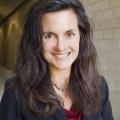A Special Invitation
Resource Library
ChangeLab Solutions has developed two complementary guides to help policymakers, advocates, and stakeholders consider the effects of attendance-based funding.
 It is important to assess where we are, where we have been and where we are going. This time of year naturally leads us to those thoughts. At the risk of being cliché, I welcome the opportunity to think about what worked well with the Greater Washington, DC network in 2012 and what we might do differently in 2013.
It is important to assess where we are, where we have been and where we are going. This time of year naturally leads us to those thoughts. At the risk of being cliché, I welcome the opportunity to think about what worked well with the Greater Washington, DC network in 2012 and what we might do differently in 2013.
 Every child deserves the opportunity to get themselves to and from school. Besides being able to chase frogs or play with their friends, there are many benefits to being able to have that activity in their day.
Every child deserves the opportunity to get themselves to and from school. Besides being able to chase frogs or play with their friends, there are many benefits to being able to have that activity in their day.
This document provides a full copy of the Safe, Accountable, Flexible, Efficient Transportation Equity Act. (SAFE-TEA)
 If the news in your hometown is similar to what I hear in Washington, DC, you are probably hearing a lot about the sequester. Back in 2011, Congress and the President agreed to reduce the federal deficit, and created the sequester as a fail-safe to force spending cuts if they couldn’t reach a deal.
If the news in your hometown is similar to what I hear in Washington, DC, you are probably hearing a lot about the sequester. Back in 2011, Congress and the President agreed to reduce the federal deficit, and created the sequester as a fail-safe to force spending cuts if they couldn’t reach a deal.
This document summarizes goals and performance measures for MAP-21.
 I recently had the opportunity to speak to Mayor Carolyn Thompson of Elkton, Tennessee. Elkton has fewer than 20,000 residents and is about twenty-five miles north of Huntsville, Alabama. Elkton has one elementary school with 327 students in pre-Kindergarten through eighth grade. They also do not have any sidewalks in their town.
I recently had the opportunity to speak to Mayor Carolyn Thompson of Elkton, Tennessee. Elkton has fewer than 20,000 residents and is about twenty-five miles north of Huntsville, Alabama. Elkton has one elementary school with 327 students in pre-Kindergarten through eighth grade. They also do not have any sidewalks in their town.
This book provides government officials, transportation decisionmakers, planning board members, and transportation service providers with an overview of transportation planning. It contains a basic understanding of key concepts in statewide and metropolitan transportation planning, along with references for additional information.
 The Mississippi Delta is a region of the state that is comprised of approximately 18 counties, of which 30% of the residents live below the poverty level.
The Mississippi Delta is a region of the state that is comprised of approximately 18 counties, of which 30% of the residents live below the poverty level.
A comprehensive school physical activity program (CSPAP) can ensure that students achieve the recommended amounts of daily physical activity by providingopportunities for physical activity before, during and after the school day. This resource describes components of a CSPAP.
 With spring new leadership emerges within the Safe Routes Partnership (Safe Routes Partnership) Florida Network. However, to some this “newness” may be a bit familiar.
With spring new leadership emerges within the Safe Routes Partnership (Safe Routes Partnership) Florida Network. However, to some this “newness” may be a bit familiar.
Schools play a central role in providing opportunities for students to engage in physical activity. Physical education (P.E) is the one time during the day when all students can be active. School boards can consider policy and curriculum strategies to support increased physical activity in P.E.
 Let’s Go NC! was developed for the North Carolina Department of Transportation’s (NCDOT) Division of Bicycle and Pedestrian Transportation and the state Safe Routes to School program by NC State University’s Institute for Transportation Research and Education (<
Let’s Go NC! was developed for the North Carolina Department of Transportation’s (NCDOT) Division of Bicycle and Pedestrian Transportation and the state Safe Routes to School program by NC State University’s Institute for Transportation Research and Education (<
This resource outlines the roles and responsibilities of school board members regarding school healthand student wellness.
 “Wear lights, especially at night,” “no texting while walking,” “make them see you.” It seems to be that time of year in the Greater Washington, D.C. metro region where every jurisdiction is finishing up or rebranding their Pedestrian Safety Campaigns.
“Wear lights, especially at night,” “no texting while walking,” “make them see you.” It seems to be that time of year in the Greater Washington, D.C. metro region where every jurisdiction is finishing up or rebranding their Pedestrian Safety Campaigns.
This report serves as an educational piece for Congressional members on the progress of Safe Routes to School. The report includes an executive summary, successes of the federal SRTS program, lessons learned, challenges, funding information, and recommendations for the future of SRTS.
 Major polls show that Americans want to live in places where it’s safe to walk and bicycle. The demand for walkable, livable communities has prompted many municipalities to make more investments in multi-modal transportation and adopt policies such as Complete Streets that institutionalize planning, design and construction for all types of road users.
Major polls show that Americans want to live in places where it’s safe to walk and bicycle. The demand for walkable, livable communities has prompted many municipalities to make more investments in multi-modal transportation and adopt policies such as Complete Streets that institutionalize planning, design and construction for all types of road users.
This resource provides school board members with information on local wellness and physical activity resources, sample policies, case studies and fact sheets.
 This week, both the House and Senate are considering their transportation appropriations (or funding) bills. Because most transportation funding is locked in through MAP-21, we don’t have to fight for funding every year like most programs. (See more on timing updates below)
This week, both the House and Senate are considering their transportation appropriations (or funding) bills. Because most transportation funding is locked in through MAP-21, we don’t have to fight for funding every year like most programs. (See more on timing updates below)

